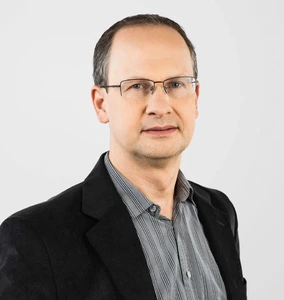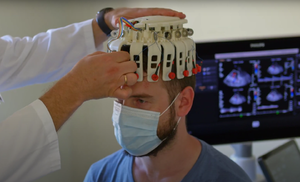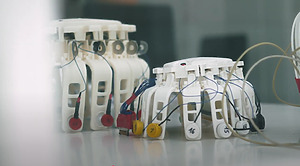Stroke is one of the leading causes of long-term disability worldwide. According to the World Health Organization, approximately 15 million people suffer a stroke each year. Of these, 5 million die and another 5 million are left permanently disabled. It is also estimated that someone suffers a stroke every two seconds, and dies from it every six seconds.
When a stroke occurs, every minute counts – it determines how much brain tissue can be saved. But even after successful care during the emergency phase, long-term monitoring becomes crucial, as the long and complex recovery process begins.
Synchronised signals for stroke insight
One of the system’s key innovations is its ability to synchronously record several physiological signals that reflect the activity of the entire circulatory system. According to Dr Jegelevičius, although predicting a stroke is extremely difficult, once it occurs, combining data on the heart’s electrical activity, vascular biomechanics, and cerebral blood flow helps create a detailed picture of circulatory processes.
The system registers cardiac activity using an electrocardiogram (ECG) and a photoplethysmogram (FPG), physical motion through an inertial sensor, and cerebral blood flow changes via bioimpedance measurements.
“An ECG reflects the heart’s electrical stimulation, which triggers muscle contraction. The FPG, which works by detecting how light is absorbed or reflected by tissue, shows the propagation of blood pulses throughout the body and reflects the biomechanics of the circulatory system,” Jegelevičius explains.
This principle allows the system to detect how blood flow is distributed in the brain, something that changes during and after a stroke. “When a stroke occurs, a blockage in a blood vessel disrupts normal cerebral circulation. These changes are reflected in bioimpedance measurements,” he adds.
A step closer to forecasting stroke
Although the system does not yet predict stroke with full certainty, it already helps monitor condition changes and identify potential risks. “We cannot yet claim it will detect a recurrent stroke or other serious event, but the potential is there,” says Jegelevičius.
To be effective in different clinical contexts, the system is designed for both short-term and long-term monitoring, including use during rehabilitation. Its two main components – cardiovascular and cerebral bioimpedance monitoring – can function independently, but their combination provides synchronised and more comprehensive physiological data.
The technology is already protected under a European patent held jointly by Kaunas University of Technology, the Lithuanian University of Health Sciences, and Gruppo Fos Lithuania. Researchers believe this invention may eventually prove useful not only for post-stroke monitoring but also for managing other neurological and cardiovascular conditions.
The commercialisation of the invention is facilitated by the KTU National Innovation and Entrepreneurship Centre.





